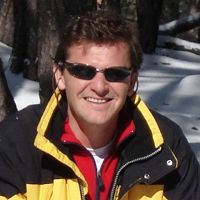Troch et al., 2013
Hydrologic discovery through controlled experimentation, data analysis, and numerical and analytical modeling at the Landscape Evolution Observatory (Invited)
Troch P.A., Gevaert A., Smit Y., Niu G., Nakolan L., Kyzivat E. (2013)
Abstract H11C-1167 presented at 2013 Fall Meeting, AGU, San Francisco, CA, 9-13 Dec.
-
Catalina-Jemez, INVESTIGATOR
-
Catalina-Jemez, INVESTIGATOR, COLLABORATOR
Abstract
The Landscape Evolution Observatory (LEO) at Biosphere 2-The University of Arizona consists of three identical, sloping, 333 m2 convergent landscapes inside a 5,000 m2 environmentally controlled facility. These engineered landscapes contain 1-meter depth of basaltic tephra, ground to homogenous loamy sand that will undergo physical, chemical, and mineralogical changes over many years. Each landscape contains a spatially dense sensor and sampler network capable of resolving meter-scale lateral heterogeneity and sub-meter scale vertical heterogeneity in moisture, energy and carbon states and fluxes. The density of sensors and frequency at which they can be polled allows for data collection at spatial and temporal scales that are impossible in natural field settings. Embedded solution and gas samplers allow for quantification of biogeochemical processes, and facilitate the use of chemical tracers to study water movement at very high spatial resolutions. Each ~600 metric ton landscape has load cells embedded into the structure to measure changes in total system mass with 0.05% full-scale repeatability (equivalent to less than 1 cm of precipitation). This facilitates the real time accounting of hydrological partitioning at the hillslope scale. Each hillslope is equipped with an engineered rain system capable of raining at rates between 3 and 45 mm/hr in a range of spatial patterns. The rain systems are capable of creating long-term steady state conditions or running complex simulations. The precipitation water supply storage system is flexibly designed to facilitate addition of tracers at constant or time-varying rates for any of the three hillslopes. Six trenches measure subsurface flow via tipping bucket gauges and electromagnetic flowmeters. This presentation will give an overview of lessons learned during the commissioning phase of the first hillslope of LEO, and will indicate several opportunities for collaborative research at Biosphere 2.
Citation
Troch P.A., Gevaert A., Smit Y., Niu G., Nakolan L., Kyzivat E. (2013): Hydrologic discovery through controlled experimentation, data analysis, and numerical and analytical modeling at the Landscape Evolution Observatory (Invited) . Abstract H11C-1167 presented at 2013 Fall Meeting, AGU, San Francisco, CA, 9-13 Dec..
Explore Further


